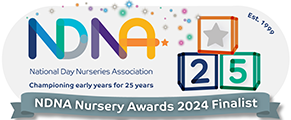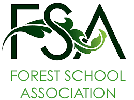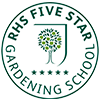Using stimulus as an inspiration for a creative activity
During this blog we will look at how we can use the children’s interests alongside local events to create a stimulus as inspiration for a creative activity. The children in Pre-school had a fascination with Space and with Gaia Earth installation coming to Derby City Cathedral the team were excited to give the children the opportunity to visit it. We planned to visit the Cathedral over two weeks ensuring all children within Pre-school got a chance to experience it. Many children had never been on the nursery minibuses before, so this was a very exciting opportunity for them too.

We decided as a team to follow the children’s interests and be guided by them after visiting the Cathedral to look at where we would take their learning next, leaving the planning of subsequent activities until after their visit. We had looked at what we wanted the children to learn and why, but had decided not to pre-plan activities, but rather be led by the children.
The children were very excited about their surprise adventure and when we reached the Cathedral took the opportunity to have snack and talk about the building itself. Supporting them to learn about a special landmark in our city, but also touch on other cultures and religions. When we went inside the children were in awe with what they saw and were amazed by the huge floating Earth before them. We took the opportunity to talk with them about what they could see, looking at the different countries, discussing what they thought the white wispy and vast blue parts of the Earth were and talking about how the Earth moves, learning about night and day. Children were able to share the knowledge that they already knew with their friends, but as staff we also built on this by teaching them new facts and key vocabulary.
Back at nursery the children were eager to share representations of what they had seen. Following this interest, we decided to go outside and create mini versions of the Earth, using powder paint. We used questions to prompt the children to think about what they could use a template to create the circular shape of the Earth. Once they had decided, we looked at what colours of powder paint we needed. As we didn’t have green, we used this as an opportunity to look at colour mixing. The children chose which resources they wanted to use to mark make with – brushes, sponges, rollers and if they wished to work in a group or independently. Throughout the activity we assessed what the children had recalled from their visit and reinforced their knowledge. Many children stayed at the activity for a considerable amount of time, going back to their artwork and altering their masterpieces. We took pictures of our artwork to share with our friends and parents and then worked further on those gross motor skills by hosing down and using big brushes to clear the playground ready for others.
The two activities ignited the children’s curiosity, built on what they already knew and extended their knowledge. It allowed them to develop skills linked to Physical development, Communication and language, Personal social and emotional, Literacy, Mathematics, Knowledge and Understanding of the world and Expressive arts and design. It also linked to the Leuven scales and to the Characteristics of effective learning. All in all, these activities were tremendously successful with the children really absorbed in their learning with a mixture of adult led and child initiated.
Hopefully this blog has helped you to understand the links between providing a stimulus for the children, building on their interests and using this as a starting point, following their lead and enhancing their learning further through key questioning, developing both their knowledge and skills. The most extensive part of the planning process was ensuring that all children were given the opportunity to visit the art installation as for many this may have been or would be the only time, they could experience such a spectacular piece of artwork. Following that, it was looking at the three I’s – Intent, Implementation and Impact. None of which required a huge amount of planning, simply looking at key vocabulary, facts we wished the children to learn (Knowledge) and what skills we would develop. The activities we plan don’t have to be huge, spending ages on setting them up for the children. Sometimes the simplest activities can have a huge impact!















